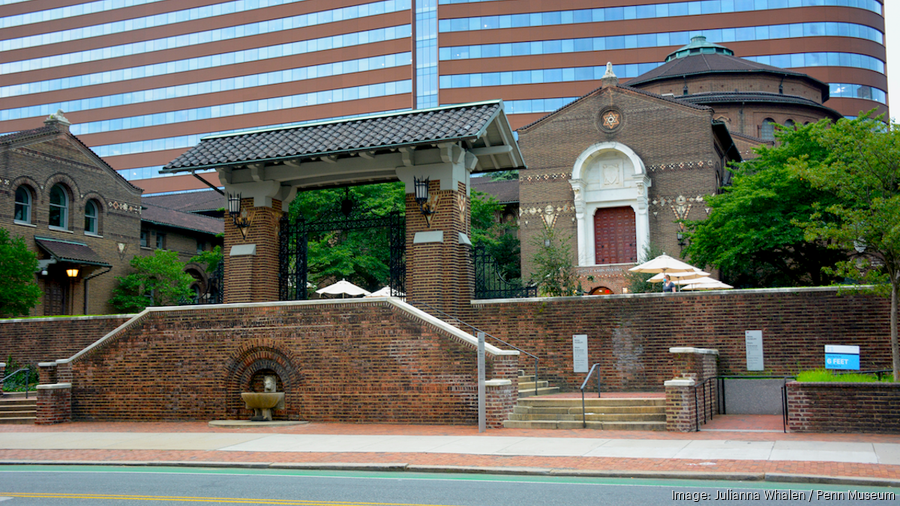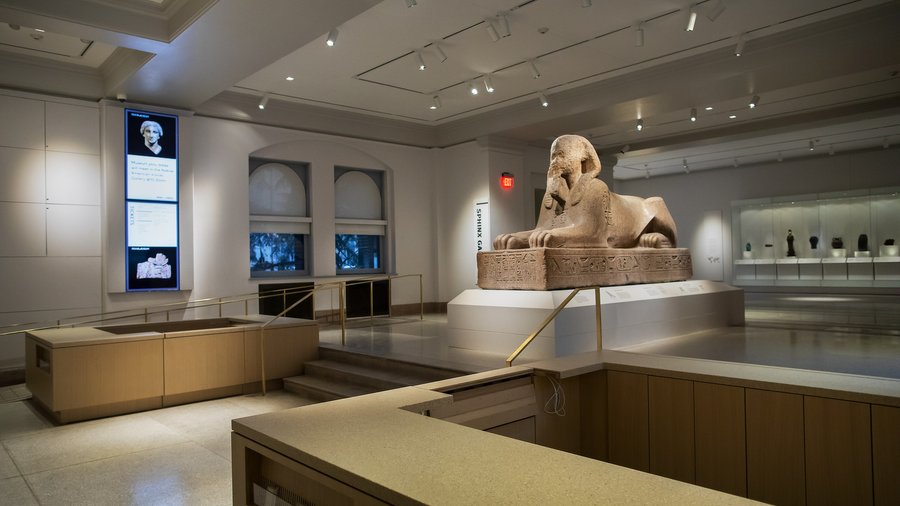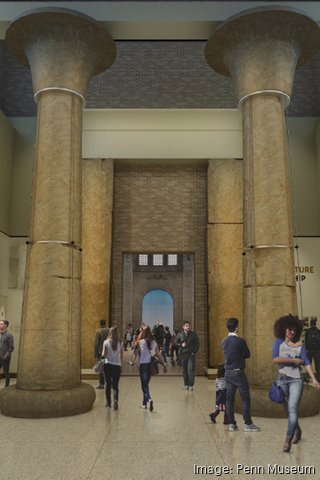Listen to this article 2 min
The University of Pennsylvania Museum of Archeology and Anthropology, also known as the Penn Museum, plans to begin construction on its $54 million Ancient Egypt and Nubia galleries this fall.
It will be the largest renovation in its history and the latest in a decade-long transformation of the 136-year-old museum.
To start work on the space, the museum's Egypt gallery, which first opened in 1926, will close to the public on Nov. 6. Another exhibition titled Ancient Egypt: From Discovery to Display will be open to provide access to the collection during construction of the new galleries, and Egyptian artifacts will also be available to view in the Africa galleries and Eastern Mediterranean gallery, which debuted last year.
In total, the Penn Museum has about 50,000 Egyptian and Nubian objects spanning from 4,000 B.C.E. through the 7th century C.E. The collection is one of the largest in the country.
Renovations to the 14,000-square-foot space will be conducted in two phases. First, the Penn Museum will update its main level galleries that will focus on life and afterlife in Ancient Egypt. The large central gallery will include the limestone tomb chapel of Kaipure, which dates back to 2,3000 B.C.E. and has not been on display in its full form for more than 30 years.
The main level galleries are expected to reopen near the end of 2026.

For the second phase of the project, the museum plans to convert the upper level space into galleries focused on the gods, kings and pharaohs and including the 3,000-year-old palace of the Pharaoh Merenptah. The palace's 30-foot-tall columns will be on display at their full height for the first time since they were excavated more than 100 years ago.
Penn Museum is targeting late 2028 for the completion of this phase.
Other updates to the galleries include new artifact storage facilities and a study room for the Egyptian collection. The museum will also install steel tie rods across the Guastavino arches in the lower gallery to increase floor load capacity and allow the upper level gallery to accommodate the weight of the palace of Pharaoh Merenptah.
Christopher Woods, the Williams Director for Penn Museum, said in a statement that once open, the galleries will be "a feat of major significance and a point of cultural pride" for the region.
“Nowhere else outside of Egypt will visitors be able to walk through soaring architectural elements of an ancient Egyptian palace — it is worth the wait,” said Woods, who assumed his role in April 2021.







The sphinx of Ramses II in its new permanent home at the Penn Museum.
The total cost of the overhaul of the galleries includes construction, exhibition installation, conservation of more than 2,000 artifacts, the design of the two floors that will make up the galleries and an investment in staff and project management resources. Construction on the renovated Coxe Wing, which will house the new galleries, will cost $24.5 million alone.
Updates to the Ancient Egypt and Nubia galleries are the latest phase in the museum's ongoing building transformation project, a reimagining of about 75% of the museum's footprint. The project began in 2014 with the renovation of the museum's west wing, including the Widener Auditorium and the Center for the Analysis of Archaeological Materials laboratory.
Penn Museum continued its progress in 2018 with the opening of the Middle East galleries. In November 2019, it reopened its Africa galleries, Mexico and Central America gallery, Sphinx gallery and its historically restored Harrison Auditorium. Its most recent update was the opening of its new Eastern Mediterranean gallery in November 2022.
As it prepares to start work on the Ancient Egypt and Nubia galleries, it is also working on a new Native North American gallery that's expected to open in the spring of 2025. The last phase of the building transformation will be the renovations of a small gallery space and its adjacent Asia galleries located in the rotunda, which first opened in 1915.
Including their current and upcoming work on the Native North American gallery and the Ancient Egypt and Nubia galleries, the museum has invested a total of $110 million in the building transformation so far. The cost of the Ancient Egypt and Nubia galleries makes up 49% of that cost.
The Penn Museum, located at 3260 South St. on the University of Pennsylvania's campus, was founded in 1887. It sees more than 180,000 visitors annually across its galleries, exhibitions and programming online and in-person, according to its website.





